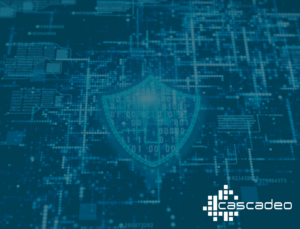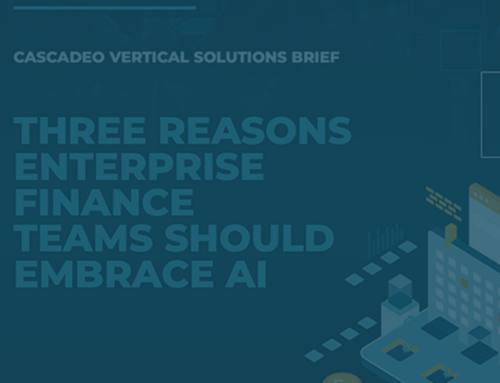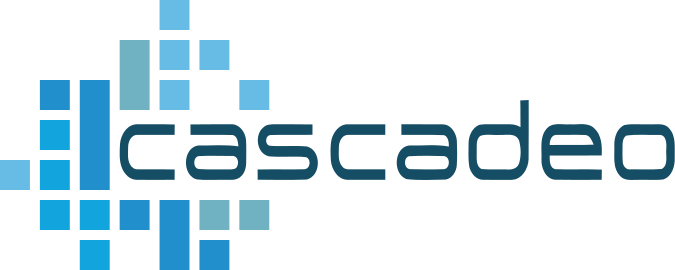
Security concerns are the most common barrier to cloud adoption. In fact, a transformative migration built by cloud experts offers more security tools and options than an on-premises deployment, regardless of which cloud vendor you choose.
Don’t let security worries keep you out of the cloud
 Security concerns are the most common barrier to cloud adoption. We told you in our post about breaking down barriers to cloud adoption that a well-made cloud transformation can actually provide more security for your operations than an on-premises system. How can that be, when you’ve heard of multiple cloud security breaches? It has to do with how cloud responsibility is structured, and how your cloud architecture is configured, deployed, and managed.
Security concerns are the most common barrier to cloud adoption. We told you in our post about breaking down barriers to cloud adoption that a well-made cloud transformation can actually provide more security for your operations than an on-premises system. How can that be, when you’ve heard of multiple cloud security breaches? It has to do with how cloud responsibility is structured, and how your cloud architecture is configured, deployed, and managed.
A good place to start is understanding how cloud vendors designate responsibility for computing environments, which AWS, Microsoft Azure, and Google Cloud Platform define via a “shared responsibility model.” In this model, cloud providers are accountable for the hardware and physical environment where the hardware is located. It can feel counterintuitive to trust the safety of your data and operations to an environment with “public” right in the name, and over which you have no physical control. But in practice, AWS, Azure, and GCP have far more resources at hand, and far more experts managing them, than any company could ever access to secure on-premises servers.
The other half of the shared responsibility model establishes that cloud customers are accountable for the security of their deployments and operations in the cloud. That’s a tremendous level of responsibility to manage when cloud talent is scarce and cloud technology is both complicated and constantly evolving. But the fact is that most cloud security breaches happen on the customer side of the shared responsibility model, meaning that the server’s physical configuration is not a primary source of threat.
What causes security issues, then? Your deployment and management of your computing environment is the key to your data and operational security, whether you’re in the cloud or not. An expertly designed cloud migration that builds in security from the ground up and makes security management an ongoing part of operations offers more tools for keeping your customer data and your operations safe than a legacy deployment. But it’s essential to recognize that the cloud is functionally different than traditional on premises computing; treating the cloud like a legacy operation opens you to a wide variety of problems, including overspending, inefficiency, and yes, lapses in security.
The best approach to cloud security starts with cloud expertise and careful planning. Rushing into the cloud not only creates new problems, it fails to position your company to benefit from the tremendous advantages available in the cloud. Your starting point must be a strong discovery program, followed by a carefully crafted migration strategy designed to accomplish your business goals via cloud-native technology, not to simply move your current workloads into a new location. That plan should lean as heavily as possible on SaaS and PaaS solutions and avoiding substituting virtual machines for legacy servers, among other strategic choices, and must include security considerations at every step of migration, and as an ongoing process of cloud management, ideally via expert managed services.
One approach, DevSecOps, integrates security into all aspects of development, ensuring that it remains at the forefront of every operational function and every release. Like its sibling, DevOps, DevSecOps desegregates development, operations, and security teams and processes to shorten release cycles and ensure that all three components are fully considered throughout development and operations. Implementing a DevOps/DevSecOps approach is strongly recommended, as it supports ongoing cloud management and rapid deployment much more effectively than traditional models. While a full reconfiguration of your IT department may seem unnecessary to optimize your legacy IT deployment, taking advantage of the business agility offered by the cloud demands rethinking how IT business is done.
Within your DevSecOps teams, any number of choices can increase security by orders of magnitude. For a few examples: Automation across many facets of development and operations helps reduce human error, which is responsible for 88% of cloud security breaches, including keeping that human error out of IT production environments, gathering and analyzing the widest range of data to capture anomalies and alert the right people for remediation, and managing CI/CD cycles, ideally via SIEM (security information and event management) tools. Centralized and tightly controlled authentication and access for all assets following the principle of least access helps reduce unauthorized guests. Some cloud experts believe that serverless setups are more secure than containers, as they reduce human maintenance of workloads. And, of course, following your cloud vendor’s best architecture practices and keeping your setup continuously aligned with those practices across all functions, regardless of the many other cloud technologies you may choose to deploy, is essential.
Unfortunately, too many enterprises come to the cloud via genericized lift-and-shift migrations that treat the cloud as an extension of their legacy hardware, which results in poor cost optimization, missing out on cloud-native features and business agility, and exposure to unnecessary security risks. A true cloud transformation, partnered with a team of professional and managed services experts, changes the way you do business for the better, providing access to all the cloud has to offer and preparing your organization to grow at scale, with agility and security, into the future.




